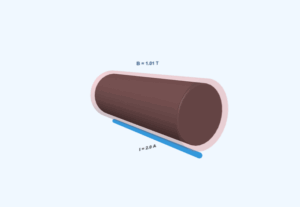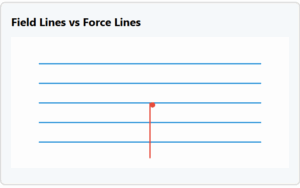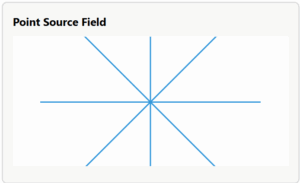Magnetic Properties Simulation
Example 5.1: Magnetic Properties Exploration
When you cut a magnet, each piece becomes a new magnet with its own north and south pole. This happens because magnetic fields are continuous and form closed loops - they cannot terminate at a point.
The net force is attractive because the induced south pole (say) in the nail is closer to the north pole of magnet than induced north pole.
A toroid's magnetic field is completely contained within its windings, with no distinct north or south poles.
Example
Question:
(a) What happens if a bar magnet is cut into two pieces: (i) transverse to its length, (ii) along its length?
(b) A magnetised needle in a uniform magnetic field experiences a torque but no net force. An iron nail near a bar magnet, however, experiences a force of attraction in addition to a torque. Why?
(c) Must every magnetic configuration have a north pole and a south pole? What about the field due to a toroid?
(d) Two identical looking iron bars \(A\) and \(B\) are given, one of which is definitely known to be magnetised. (We do not know which one.) How would one ascertain whether or not both are magnetised? If only one is magnetised, how does one ascertain which one? [Use nothing else but the bars \(A\) and \(B\).]
Solution:
(a) In either case, one gets two magnets, each with a north and south pole.
(b) No force if the field is uniform. The iron nail experiences a non-uniform field due to the bar magnet. There is induced magnetic moment in the nail, so it experiences both force and torque. Net force is attractive because the induced south pole (say) in the nail is closer to the north pole of the magnet than the induced north pole.
(c) Not necessarily. Only true if the source of the field has a net non-zero magnetic moment. This is not so for a toroid or even for a straight infinite conductor.
(d) Try bringing different ends of the bars closer. A repulsive force in any situation shows both are magnetised. If always attractive, then one is not magnetised. In a bar magnet, field is strongest at the ends (poles), weakest at the centre. To distinguish, pick one, say \(A\), and lower one of its ends: first on the end of \(B\), then on its middle. If \(A\) feels no change in force from end to middle, then \(A\) is not magnetised and \(B\) is; if force is absent at the centre, \(B\) is magnetised.
In a bar magnet the intensity of the magnetic field is the strongest at the two ends (poles) and weakest at the central region. This fact may be used to determine which is the magnet.



